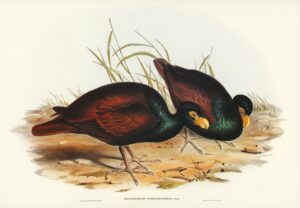Scientists have found a previously unknown population of skywalker gibbons in Myanmar. The group of researchers pinpointed the endangered primates by listening to their love songs. The study, aptly published on Valentine’s Day, confirms that the Southeast Asian country has the largest population of skywalker gibbons in the world.
A dawn chorus
Each morning the gibbons wake up and serenade their partners. Their romantic tunes echo across the forests. The research team identified 44 new groups of skywalker gibbons (Hoolock tianxing) by their genetics in Myanmar.
“This is a significant discovery for the future of primate conservation in Myanmar,” expedition leader Ngwe Lwin said.
The skywalker gibbon was first discovered in 2017. A group of researchers, who were also Star Wars fans, found less than 200 individuals in China’s Yunnan Province.

Proposed skywalker gibbon (Hoolock tianxing) distribution area in Myanmar. Image: Aung, P.P., Lwin, N., Aung, T.H. et al. 2024
Gibbons can’t swim, so rivers act as natural geographic barriers. Researchers have long suspected that there might be a population between two rivers that run through the jungles of Myanmar. However, safety concerns and the pandemic have made it almost impossible for foreign scientists to carry out primate surveys. They have relied heavily on the input of a field team based in Myanmar.
Between December 2021 and March 2023, the field team set up acoustic monitoring systems to record the primates singing to each other. They have recordings of solo songs and duets.
The next step was using non-invasive DNA sampling by collecting and analyzing pieces of fruit and plants that the gibbons had half-eaten.
Genetic analysis proved that the species is skywalker gibbons. The photographs below show how skywalker gibbons differ from other species. Skywalker gibbons have thinner eyebrows, a black or brown beard instead of white, and incomplete white face rings on females.

Morphological comparison of hoolock gibbon species. Photo: Aung, P.P., Lwin, N., Aung, T.H. et al. 2024
Surprisingly adaptable
The gibbons are an endangered species. The research shows that they are more adaptable than previously thought, but conservation efforts will be crucial to their survival.
“We found skywalker gibbons in two regions of Myanmar…in degraded forests, and at much lower elevations than we expected. This shows us they’re highly adaptable,” Smiley-Evans said.






